“The thing women have yet to learn is that nobody gives you power. You just take it.“
– Roseanne Barr
Alright, ladies, let’s get right into it – did you know you can make your own DIY feminine pads from natural materials? If not, you are in the right place.
The prepper market is dominated by men, but women have their place, too. And when it comes to feminine needs in the outdoors, bushcraft women know how to handle it.
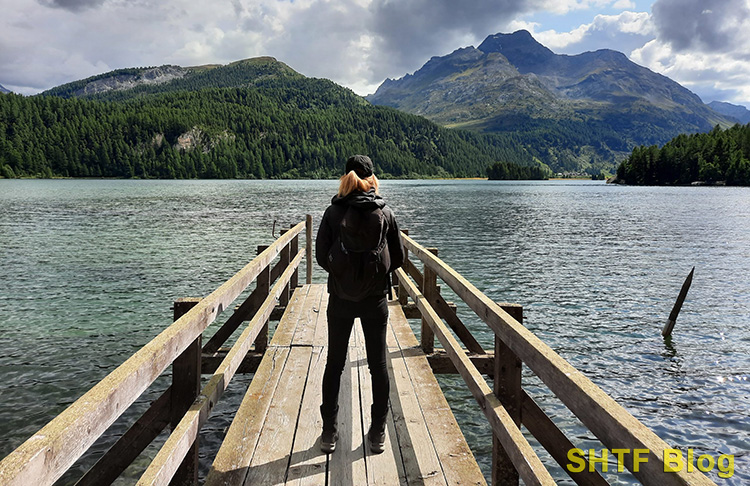
Regardless of whether you are enjoying pleasant activities in the great outdoors or are caught up in an emergency situation, having a period is a rather unpleasant experience, especially if you are caught off-guard. I am sure every woman has had this happen at least once in her life. Okay, let’s be honest, probably more than once.
These events happen. It’s a natural part of life. We don’t need to feel embarrassed or ashamed by our period. From a female perspective, though, this doesn’t alleviate all of the distress it can cause – particularly when we find ourselves in the backcountry.
There is no doubt about it, this article touches a very delicate – and private! – matter. However, it is still an important matter to discuss. Sharing our past experiences and knowledge can help other women feel comfortable and confident when they must deal with this natural occurrence outside, away from home, away from their comfort zone.
All that to say, in this blog, I am going to share my knowledge on how you can use plant identification to make DIY feminine pads and fashion them most conveniently and comfortably. Plus, it is a 100% natural remedy!
Being Prepared As a Female Prepper
“I’m excited about the aging process. I’m more interested in women who aren’t perfect. They’re more compelling.”
– Emma Watson
A menstrual cycle usually occurs every twenty-eight days. However, several factors could cause a delay, including:
- Physical stress
- Physcological stress
- Hormone treatments
- Pregnancy
- Underliying conditions
I am pretty sure that all the women reading this article have experienced at least one of the factors mentioned above. For this reason, it is very common for us to keep tampons and/or pads, along with some painkillers, on our person at all times. You never know when it might be your lucky day!
Seriously, though, we stuff them inside our bags, backpacks, in the glove compartment of our vehicles. It’s comforting to know we are always prepared for the unknown.
But what happens when we forget to restock? Or what if we run out? I can tell you are feeling nervous at the thought.
There is no need to sweat it, though. The situation can be remedied without feeling distressed or spoiling our clothes. Every outdoorswoman has nature’s wonderful and well-furnished supermarket at her fingertips. And, with consciousness and respect, we can take advantage of what Mother Nature provides.
Before we dive into the specifics, though, let’s cover a little menstrual hygiene history. It’s important to understand how we got to where we are today.
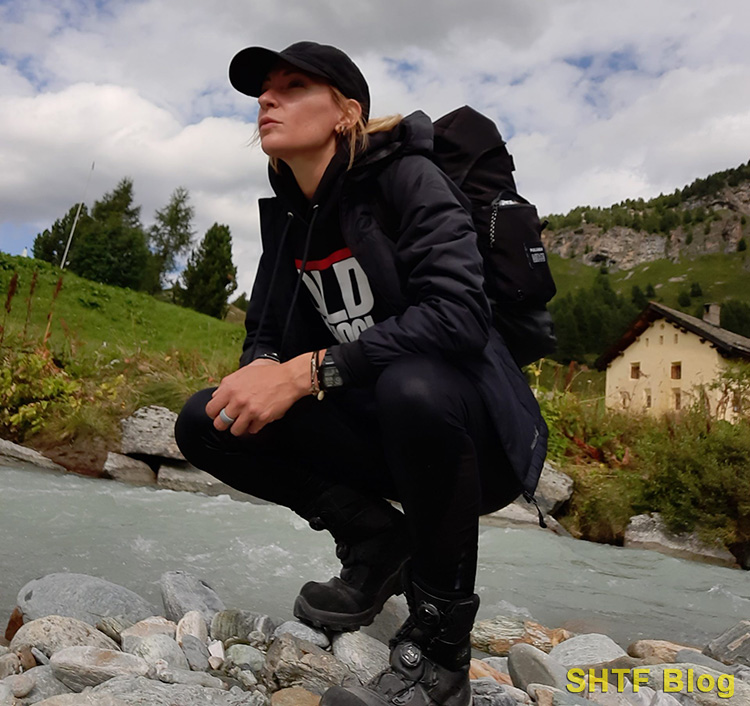
Brief History of Menstrual Hygiene
“If you retain nothing else, always remember the most important rule of beauty, which is: who cares?“
– Tina Fey
Archeological researchers discovered what are likely the most ancient menstrual pads, which were made out of papyrus. These would have been pretty convenient, comfortable, and well absorbent. So what changed? Why did we move away from using Mother Nature’s resources? What follows is considerably disconcerting.
Later on, in medieval times, natural feminine pads were replaced by homemade sanitary napkins – which is where we get the slang term, “on the rag”. If you have read or watched any media depicting the medieval era, it’s easy to see it was a pretty cruel period, especially for women who had, well, a period.
I read in Simple Health that, “[…] During the medieval period there is a lot of religious shame surrounding menstruation. Blood is thought to contain the body’s toxins and excesses […] Menstrual blood is considered dirty, and some even believe that drinking it will cause leprosy. Another common belief? Burning a toad and wearing its ashes around your neck will ease cramps […]”.
Can you imagine?
Much later, during the 18th century, women started sewing cotton or flannel inside their bloomers. A sanitary apron, made of rubber, was also invented to prevent blood from causing unwanted stains. The period, however, was still a massive taboo for women, so they often lived that time in seclusion.
By 1896, the very first menstrual pads were put on the market, called Lister’s Towels. Then, in the Twenties, some French WWI nurses actually invented the modern pad. It was made of acrylic cotton, which was commonly used for bandages. The company Kotex decided to turn these modern pads into commercial products. Soon after, Johnson & Johnson purchased the patent of Lister’s Towels and they renamed it “Nupak”.
The commercial use of pads officially began to hit the worldwide markets.
In the 1930s, Leona Chalmers developed the menstrual cup. It was a cup made out of rubber, meant to be inserted inside the vaginal canal to collect menstrual fluid. Perhaps not surprisingly for the time, this product was not a commercial success. It did begin to grow in popularity around the early 2000s, though.
In the year 1933, Gertrude Tendrich created the company we all know as Tampax, and, thus, the tampon was born. However, tampons were only advertised to married women. Why you ask? Many people thought a girl might lose her virginity by using them. Then, in the Forties, another well-known company was born, O.B. Tampons (“Ohne Binde” in German – “without napkins”).
Many of these companies are still around today, and many new ones have sprouted. Thus, leaving women with a seemingly absurd amount of choices among menstrual cups, tampons, and sanitary pads. Some (I repeat, some) of the taboo surrounding periods have wained, but what we have gained there, we have lost in other ways.
Apart from the menstrual cup, women’s feminine products are single-use and often involve a lot of plastic packaging – not to mention the harmful chemicals that some of the products themselves contain. For this specific reason, many companies are now trying to reduce the impact on the environment by avoiding the use of plastic packaging and going only for natural materials.
Still, the fight for natural feminine products that are good for the environment and for women is a long and nasty one. We’ve come a long way, but what if the answer lies less in progress and more in returning to our roots? What if we relied more on nature’s bounty than factory-made commodities? Well, the fact of the matter is, you can!
DIY Feminine Pads from Plants
“After all those years as a woman hearing ‘not thin enough, not pretty enough, not smart enough, not this enough, not that enough,’ almost overnight I woke up one morning and thought: I’m enough.“
– Anna Quindlen
Step 1 – Plant ID: Grab What You Need!
If you find yourself in distress at having no more menstrual napkins at your disposal (or, perhaps you want to keep it natural while you are in the backcountry), don’t fret, you can still fix the situation by looking for some large mullein leaves (Verbascum).
They are native to European and Asiatic continents, but can also be found in North America (though they are nonnative to this region). Mullein is a biennial or perennial plant, depending on the species, of which there are several. Common mullein (Verbascum thapsus) is widely distributed across the United States and Canada.
It is pretty easy to identify due to its bright yellow flowers, tall stalks, and large, soft leaves. You can find Mullein in a variety of locations, including:
- roadsides
- dry, craggy, and sunny spots
- disturbed areas
- open fields
When you are on the lookout, simply keep in mind where they grow and what they look like. Perhaps keep a plant guidebook with you until you are certain you can identify them on your own.
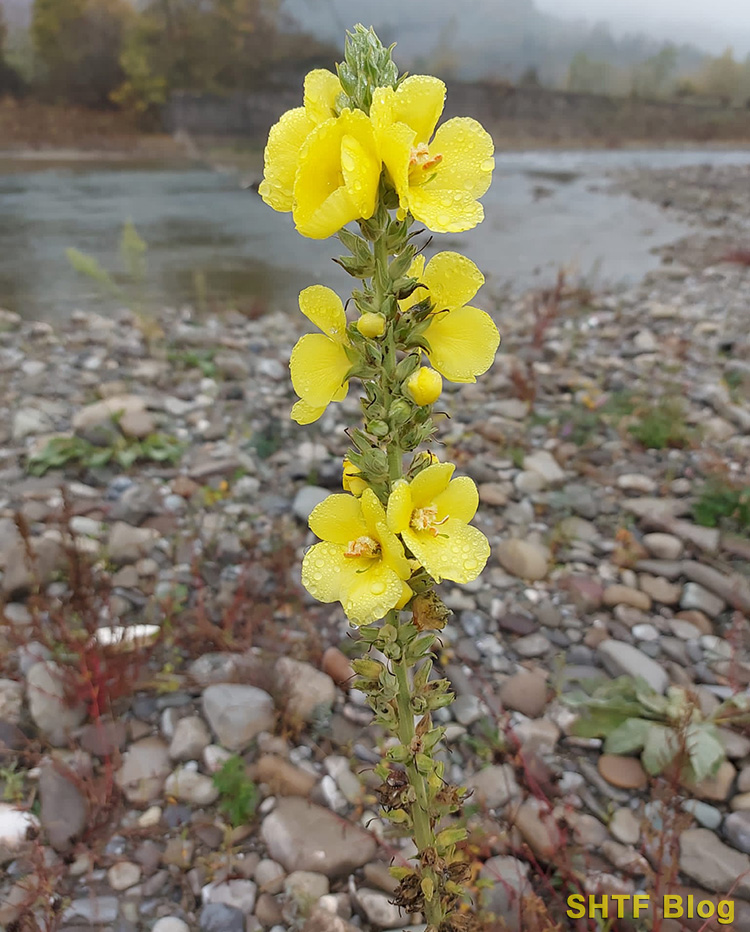
Step 2: Fashion Your Improvised DIY Feminine Pad
You only need the leaves to construct your DIY feminine pads.
Mullein has large, soft, and extremely absorbent leaves you can place in your bloomers. By collecting several and bending them accurately you can fashion a simple – albeit very effective! – pad.
You can also grab a stockpile in case you need them during the nighttime. Wondering around in the darkness to look for more is not ideal.
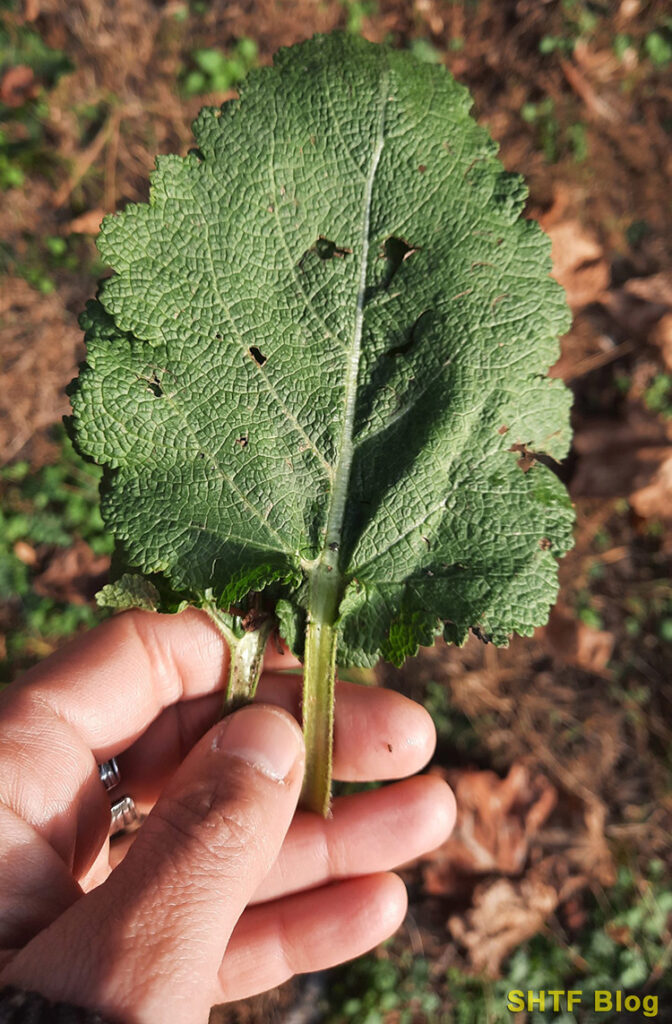
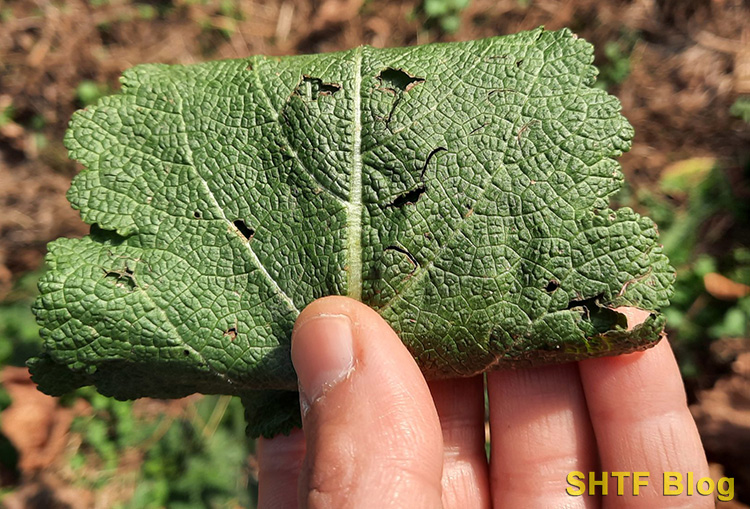
Step 3: Wrap Your Improvised Pads with Cloth
The use of mullein leaves as an improvised pad is an excellent resource, but it is highly recommended that you wrap them into clean rags – like a piece of t-shirt, for example.
In this case, you will avoid contact between leaves and skin. This will prevent any reaction or irritation from occurring where the skin is extremely sensitive.
By keeping your harvested, unused leaves a bit wet, you can carry them with you for several days, rather than constantly having to be in search of new plants.
Once used, remember to burn them – predators are attracted by the smell of blood.

Conclusion
“A strong woman looks a challenge dead in the eye and gives it a wink.“
– Gina Carey
Going natural with your feminine products can be a matter of choice or, as in the case of this article, a matter of necessity.
Whether you simply forgot your usual supplies or ran out, nature kindly offers us the opportunity to meet even our “most basic” needs. That said, Verbascum is surely one of our allies, and its presence on a multitude of terrains and territories makes it easy to identify and use to our advantage.
I’ve said it once, but I’ll say it again, we should never feel embarrassed or ashamed about this natural cycle. Instead, we can use our knowledge of natural history to make our time in the outdoors enjoyable no matter what the day might bring.
Sharing this knowledge with other women can help to grow a community that can face any uncomfortable situation with confidence and understanding.